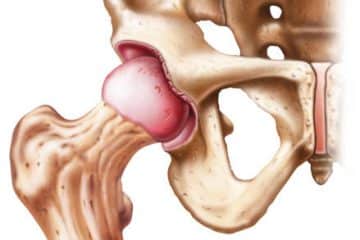Laminectomy Surgery – Overview

Laminectomy Surgery
Laminectomy is among the most popular operations for decompressing the spinal canal in diseases that lead to narrowing caused by degenerative constriction, fractures, spinal neoplasm, pus collection, and deformities.
It is usually performed when other measures, such as physical rehabilitation, medications, and weight loss, fail to eliminate or minimize the pain produced by different vertebral diseases.
What is Laminectomy Surgery?

Laminectomy
A laminectomy is a form of repair surgery that is commonly performed and in which a spinal surgeon cuts the lamina from the lower spine.
This procedure is most usually applied in the lower part of the vertebral column (lumbar laminectomy).
The lamina (bony arches) is the straightened or domed segment of the vertebral body that forms the top of the spinal canal and it is the posterior portion of the spinal canal that protects the spinal cord or nerves.
Their excision through the operation relieves pressure on pinched nerves or the spinal cord, resulting in a better lifestyle and daily activity performance.
Types of Laminectomy Surgery
Cervical laminectomy: which involves the upper part of the vertebral column.
Lumbar laminectomy: which involves the lower part of the vertebral column.
Sacral laminectomy: which involves the lowermost part of the vertebral column.
Thoracic laminectomy: which involves the middle part of the vertebral column.
Indications of Laminectomy Surgery
There are a wide variety of conditions requiring laminectomy and of them are:
Spinal stenosis: the occurrence of spinal stenosis is by far the most prevalent reason for laminectomy. constriction of the spinal canal can be caused by a variety of factors including congenital, traumatic, or neoplastic causes, but degenerative stenosis is the most prevalent.
Disc herniation: part of the spinal disc may swell outward if it is broken by pressure. Under tension or strain, the disc may eventually tear.
Sciatica: pressure on the spinal nerves near the base of the spine, in the lower back, causes disrupting symptoms.
Vertebral malignancies
Infections (peridural cysts)
Vertebral trauma (broken bones that disrupt the spinal canal)
Spondylosis (vertebral osteoarthritis)
Contraindications of Laminectomy Surgery
In general, laminectomy is a safe operation and there are few contraindications, all of them are relative contraindications and include:
Spinal instability
Isthmic spondylolisthesis
Severe scoliosis
Severe kyphosis
Equipment of Laminectomy Surgery

Laminectomy
The following is the set that is used in laminectomy
• Bone Curette Fiber Handle
• Bone Nibblers Double Action Angular 225mm
• Cobbs Elevator
• Disc Forceps
• Dura Elevator
• Kerrison Bone Punches
• McDonald Retractor
• Nerve Root Retractors
• Self-Retaining Retractor
How Laminectomy Surgery is Performed?
A typical open procedure or a minimally invasive procedure (with scope) can be used to accomplish a laminectomy.
The following are the steps to perform open laminectomy:
1. Making an Incision
With the use of an anesthetic, the patient is sedated. To reveal the spinal bones, the operator creates a cut along the center of the back and pulls away from the skin and other soft tissues.
2. Spinous Process Removal
The spinous process (prominent bony structure) is removed by the operator. That’s the part of the vertebrae that projects the most from the spine’s back.
3. Lamina Removal
The affected lamina is subsequently removed by the operator. The removal of the lamina allows the spinal canal to open up, relieving pressure on the spinal nerves and nerve roots.
4. Bone Fragments Removal
Any bone pieces that may be compressing the nerve roots are also removed by the operator.
5. Closure of The Wound
The surgery is completed when the surgeon repositions the soft tissues and seals the cut.
Laminotomy and micro-endoscopic laminotomy with tubular retractors are two minimally invasive surgical procedures.
According to recent research, these methods result in improved back muscular preservation, less intraoperative bleeding, and less postoperative pain.
Complications of Laminectomy Surgery
Laminectomy is a technique that is generally safe and has a low complication risk.
Possible complications of Laminectomy are:
Damage to the neural tissue. Trauma to the dura mater, cauda equina syndrome, and scar development can all result in neuronal tissue damage in the lumbar spine. Destruction of neural tissues in the lumbar spine can cause muscle weakness, absence of sensations, paralysis.
Instability. In persons with reduced bone mass, instability, mainly caused by past surgeries conducted on the same levels, sometimes necessitates revision operation.
Persistent neurogenic claudication. Even after a satisfactory laminectomy operation, limb discomfort while moving or twisting the vertebrae backward may persist.
Risks of anesthesia. anesthetic problems can result in heart or lung infection, blood clots.
Cost of Laminectomy Surgery
In the United States, a laminectomy can range anywhere from $11,000 and $13,000. Those with high-deductible insurance or those who do not have insurance can save money while purchasing their operations in private hospitals that provide offers.
References
https://emedicine.medscape.com/article/1890427-overview
https://pubmed.ncbi.nlm.nih.gov/31194414/
https://medlineplus.gov/ency/article/007389.htm
See Also

Dr.Sharif Samir Alijla, is a general medical doctor and a well-rounded professional that cares and treats patients from Palestine. I participated in many medical studies and conferences, I've launched a range of community initiatives and taken part in a variety of leadership and change training programs. I worked as an author for many medical websites such as TebFact . I specialized in writing medical articles from authoritative and updated sources in a simple and smooth the way for the reader.



